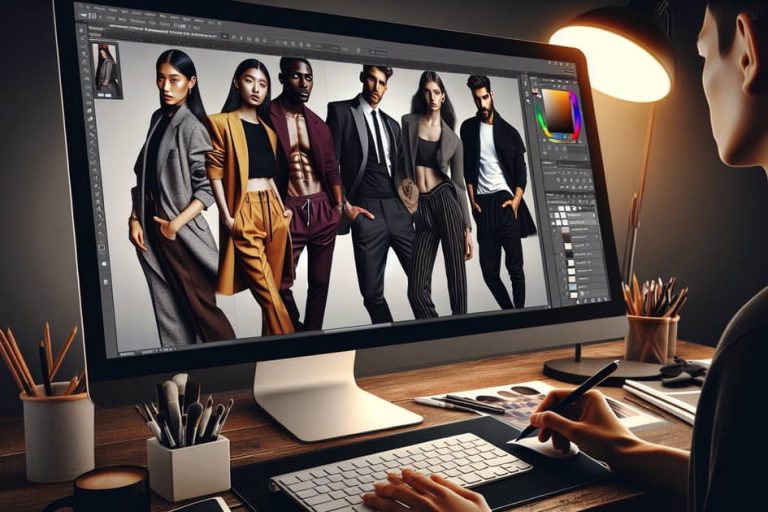Spanish fast-fashion giant Mango released its new “Mango Teen” advertising campaign last month to much fanfare. At first glance, the ad—featuring a model wearing a colorful cropped top, posed against a desert backdrop—seems like a plethora of other summer campaigns aimed at teenage girls. But upon closer inspection, something else becomes apparent: none of it is real.
Mango’s campaign was created entirely with generative AI in a collaboration between its “design, art and styling, dataset, and artificial intelligence (AI) model training and photography studio, among others,” according to the press release. But while the industry celebrates its groundbreaking innovation, a series of lawsuits, regulations and consumer frustrations threaten to slow AI in its wake.
Founded by Elaine Maguire O’Connor, Wigs And Gowns provides up-to-date news and commentary on fashion law and ethics. Wigs and Gowns also runs workshops on various topics within fashion law and business. Upcoming workshops are planned for Dublin, London and New York and details can be found on the website.
That workers in the fashion industry are underpaid and mistreated is well-documented, but the use of generative AI is exacerbating the problems. In 2023, Taiwanese-American model Shereen Wu discovered that a prominent fashion designer, Michael Costello, for whom she had modeled, had uploaded a digitally altered photo of her to his Instagram page. The problem? Wu had been altered to appear white. To make matters worse, Wu was relying on the fashion show footage to boost her profile in the industry—she hadn’t even been paid by the designer. Now she was completely unrecognizable.
Legally, models like Wu have few options in these situations. The copyright in an image is usually owned by the photographer, and as a result, only the photographer has recourse under intellectual property (IP) rights if the work is altered without permission. Models generally have no say in the matter. It is also the photographers who control the sale of the images – they decide whether the photos can be sold and then used in datasets to train and replicate in AI. This is also how fashion brands get away with using a model’s likeness to create near-identical ‘AI twins’ without permission. These can then be used to create further campaigns and advertisements without paying the models any additional compensation, and often without their knowledge. Aside from the obvious issue of AI taking work away from models who traditionally rely on such campaigns for their income, the practice of replicating and reproducing someone else’s image raises uncomfortable ethical questions.
It’s ethical issues that underlie growing consumer unease, particularly the lack of clarity around how AI is being used in design and marketing. Fashion brand Selkie, which markets itself as a “slow fashion” company, found itself on the wrong side of a social media storm this year when it emerged that it was using AI to help design collections. And given that generating a single AI image uses as much energy as fully charging a smartphone, it’s hard to square with a sustainability message. Levi’s faced a similar backlash last year when it announced plans to use AI to generate models with more diverse body types and skin tones. Critics were understandably outraged that, rather than paying a racially diverse group of models, the denim giant instead created fake versions. Others pointed out that the point of using models was to see how clothes would fit on a real human body – something that’s impossible to achieve, no matter how accurate the technology claims to be.
Fashion designers and artists are also grappling with the implications of a shift toward the use of generative AI in the industry. Lawsuits filed against fashion retail platform Shein highlight the frustrations of artists who allege that their work is being copied and reproduced by secret algorithms designed to scrape data. This, it is claimed, helps Shein identify trends and reproduce knock-offs of popular designs. While intellectual property infringement claims are nothing new in the fashion industry, the use of AI to train algorithms to reproduce popular designs has added a layer of complexity to an already problematic problem for designers.
Due to the speed at which generative AI has developed, legal systems have struggled to keep pace with the IP and ethical questions that have arisen. Finally, however, we are seeing some movement, at least in Europe. The EU Artificial Intelligence Act, which came into effect on 1 August, requires brands operating in the EU to clearly label AI-generated content so that customers know that AI has been used. The law also requires the disclosure of training data used to develop AI systems, which in theory will discourage brands from using copyrighted images and designs without the owner’s permission.
For models, however, the legal landscape remains unclear, and only time will tell whether AI will wipe out the profession or whether consumer backlash and the desire to connect with something “real” will prevail.


